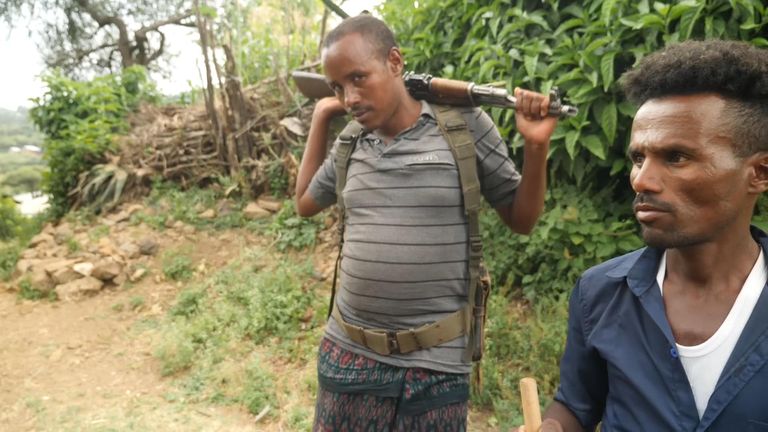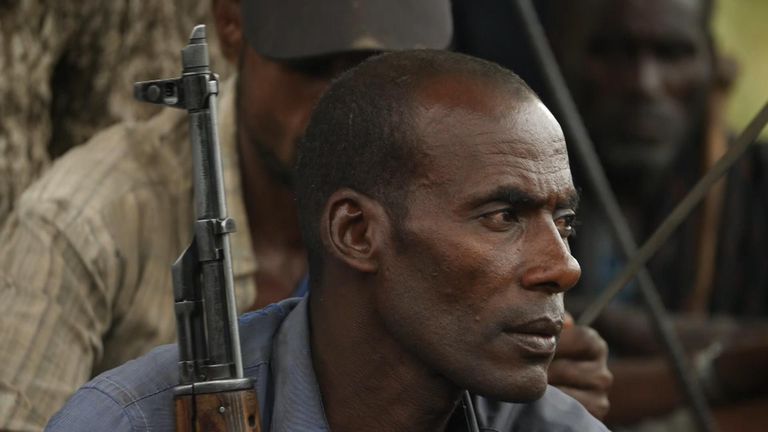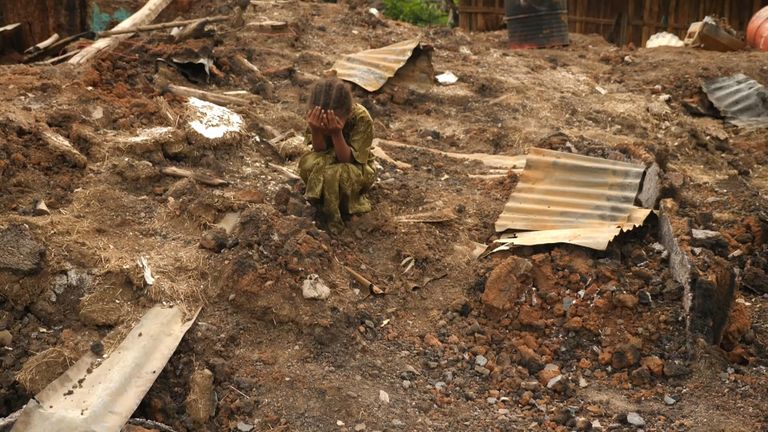Ethiopia civil war: Thousands of troops assemble on highway to front line in bloody conflict
Heading north along Ethiopia’s A2 highway, we quickly noticed that the road had turned into an elongated car park for the country’s military – the Ethiopian National Defence Force (ENDF).
Near the city of Dessie in the region of Amhara, we saw dozens of trucks, tanks and armoured personnel carriers parked by the side of the road.
Every few kilometres or so, we were stopped by surprised looking soldiers who asked us to produce our papers.
We were heading towards the front line in a nasty civil war between the national government and their partners in Amhara, and the rebellious region of Tigray. The two sides have been massing their forces – and trading blows – on the fields and mountain slopes close to the highway.
The Ethiopian prime minister, Abiy Ahmed, sent troops into Tigray last November as he tried to oust the Tigray People’s Liberation Front (TPLF) from power. A series of events, culminating in an attack on a number of federal army camps, had raised the political temperature to boiling point.
The war took a stunning turn in June when rebel fighters forced Mr Ahmed’s forces out of the Tigrayan capital, Mekelle. The prime minister declared a unilateral ceasefire, but the fighting continued as the TPLF moved south into neighbouring Amhara.
Their advance has now been checked, it seems, with members of local militia units telling us the Tigrayans have made a series of significant retreats.
Clearly, the ENDF is preparing for new engagements. We saw thousands of troops using and training on the gravel roads which branch off the A2.
The majority were male, but some soldiers were female and many looked extremely young. In Amhara, middle-school and high-school students – along with their teachers – were called up last month with explicit instructions to “bury the enemy”.
Motivation is unlikely to be an issue.
Our guides from a local militia unit drove us up the side of a mountain and stopped in a village called Uruga. They said the Tigrayans had held this community for three or four days and incinerated the local clinic and its grain mill.
I asked a local farmer why he thought they had done it.
“To cause us pain, to cause us pain,” said Seid Gebeze.
“What do you want to happen to the TPLF, the people of Tigray?” I asked.
“Have them eliminated, I personally want them to be eliminated. I want them eliminated. How many people have we lost? How many animals have we lost, how much livestock have we lost? My father is dead. I am prepared to fight.”
Most men in this village are prepared to fight, and we found them under an olive tree, clutching a variety of weapons.
They call themselves “Shete Lebashoche”, a militia of sorts – and a symbol of mass-mobilisation in Amhara.
Their leader, called Jamilu Teferu, told us they would die for their nation and their land.
“If their intention is to break up Ethiopia and put pressure on Amharans, if that is their mission, it will never work. If the Tigrayans try to deny our identity or claim our land, I say it’s never going to happen.”
Locals told us that most village residents had fled before TPLF fighters reached Uruga, but the rebels killed a number of elderly people who had been unable to run.
The Tigray Communication Affairs Bureau has described allegations in places like Uruga as, “totally wrong” and called for an independent investigation.
Human rights groups say atrocities have become common place on both sides in this conflict and have appealed for dialogue and negotiation.
Source: Read Full Article




